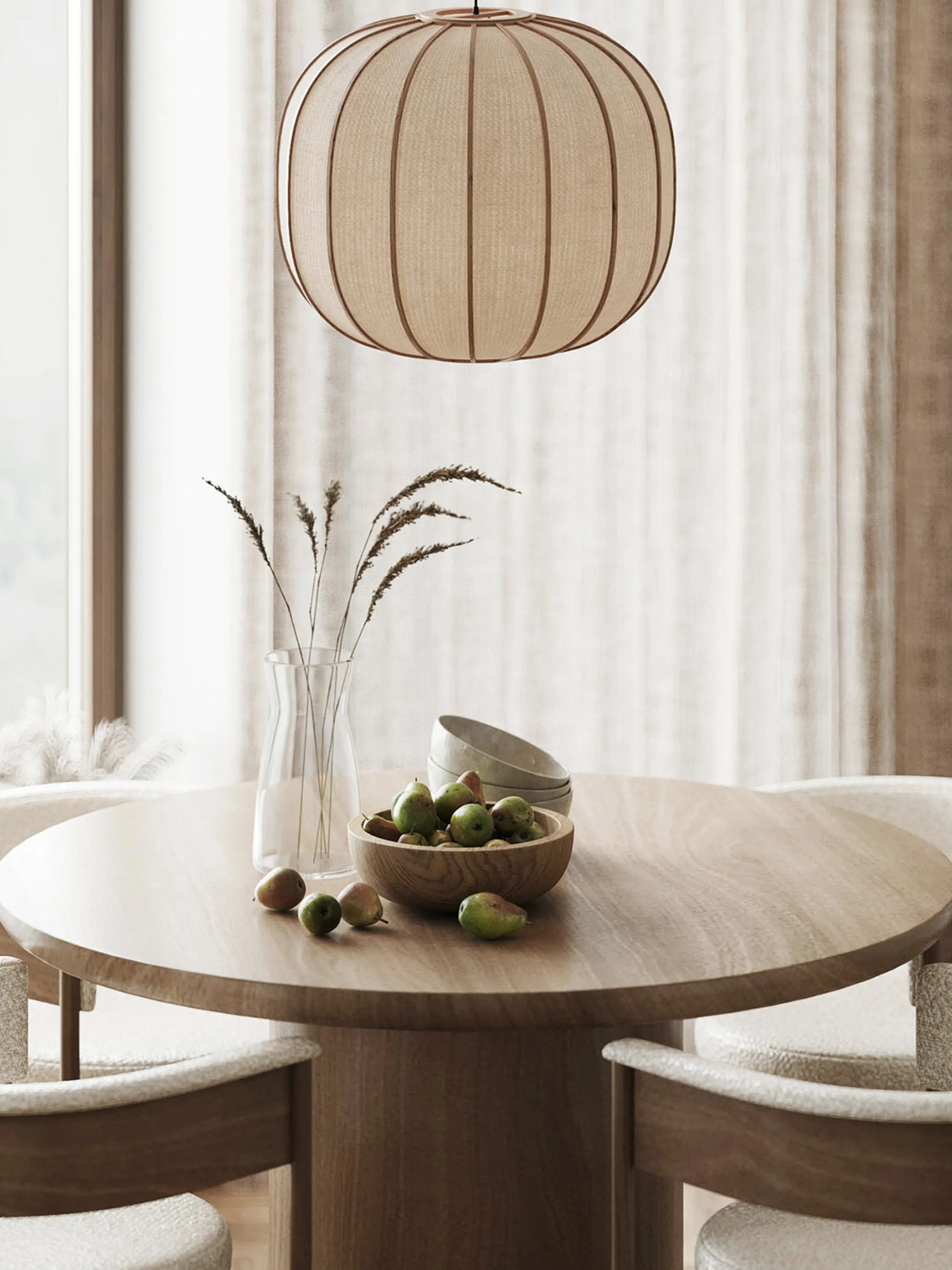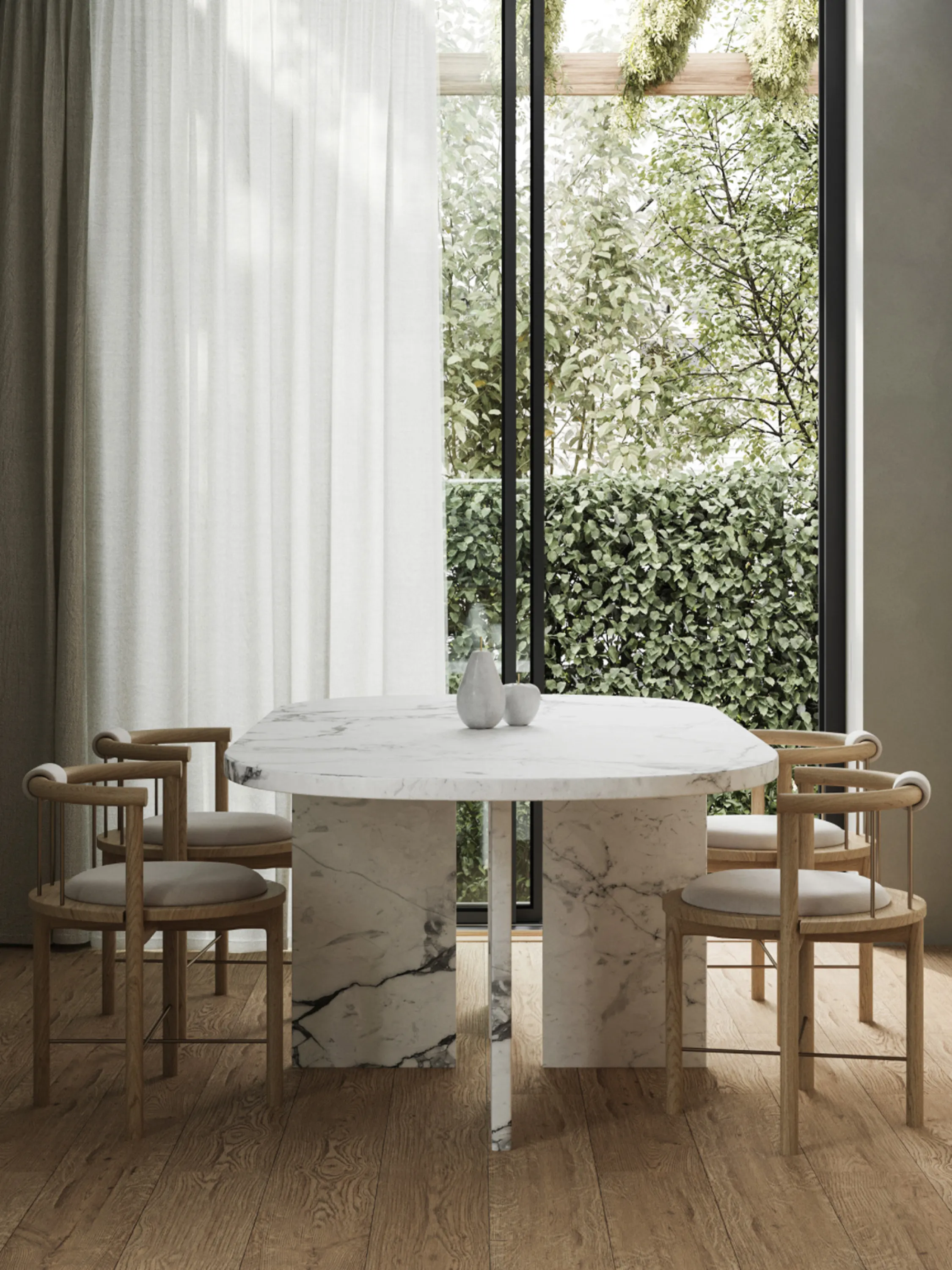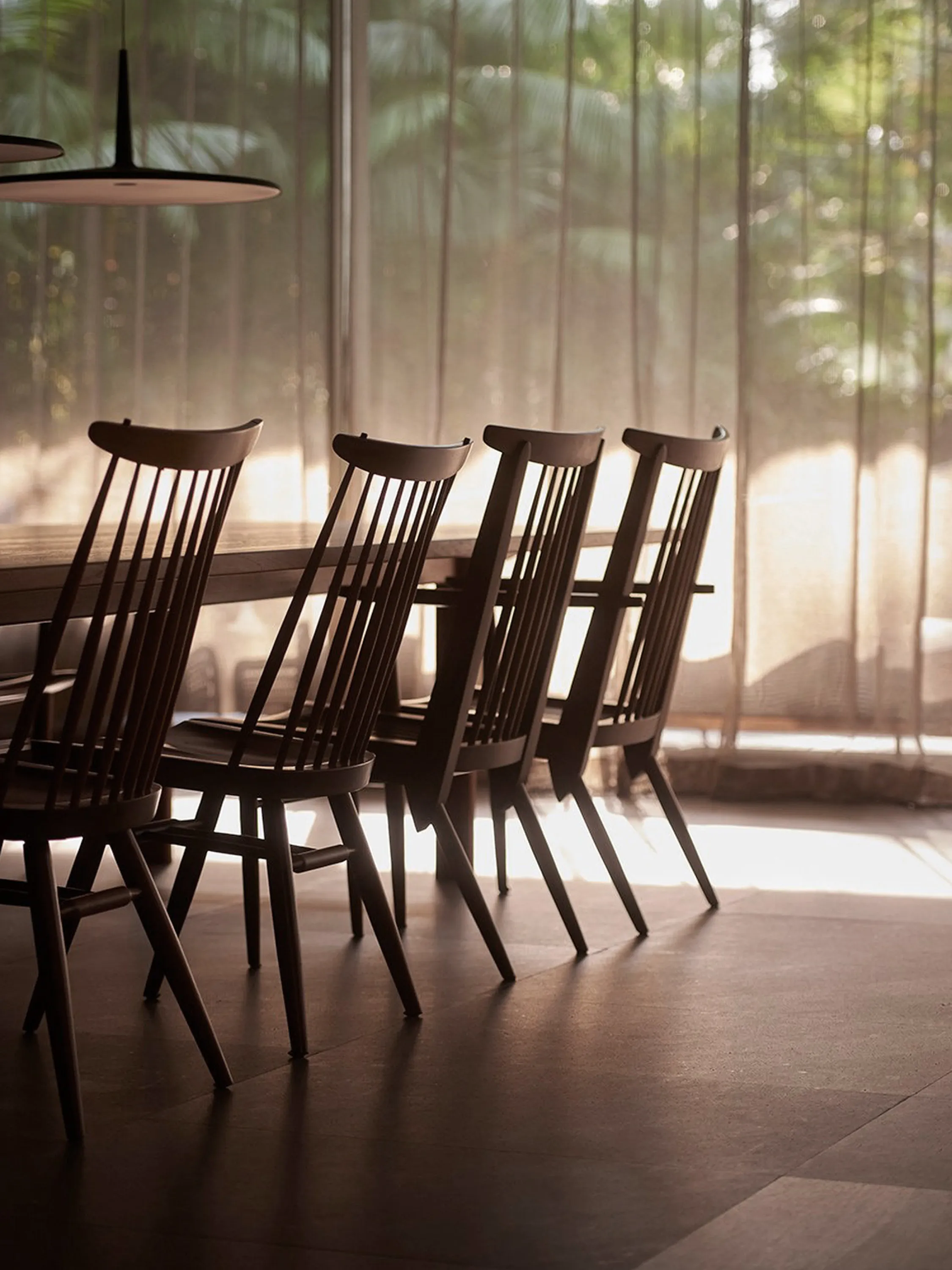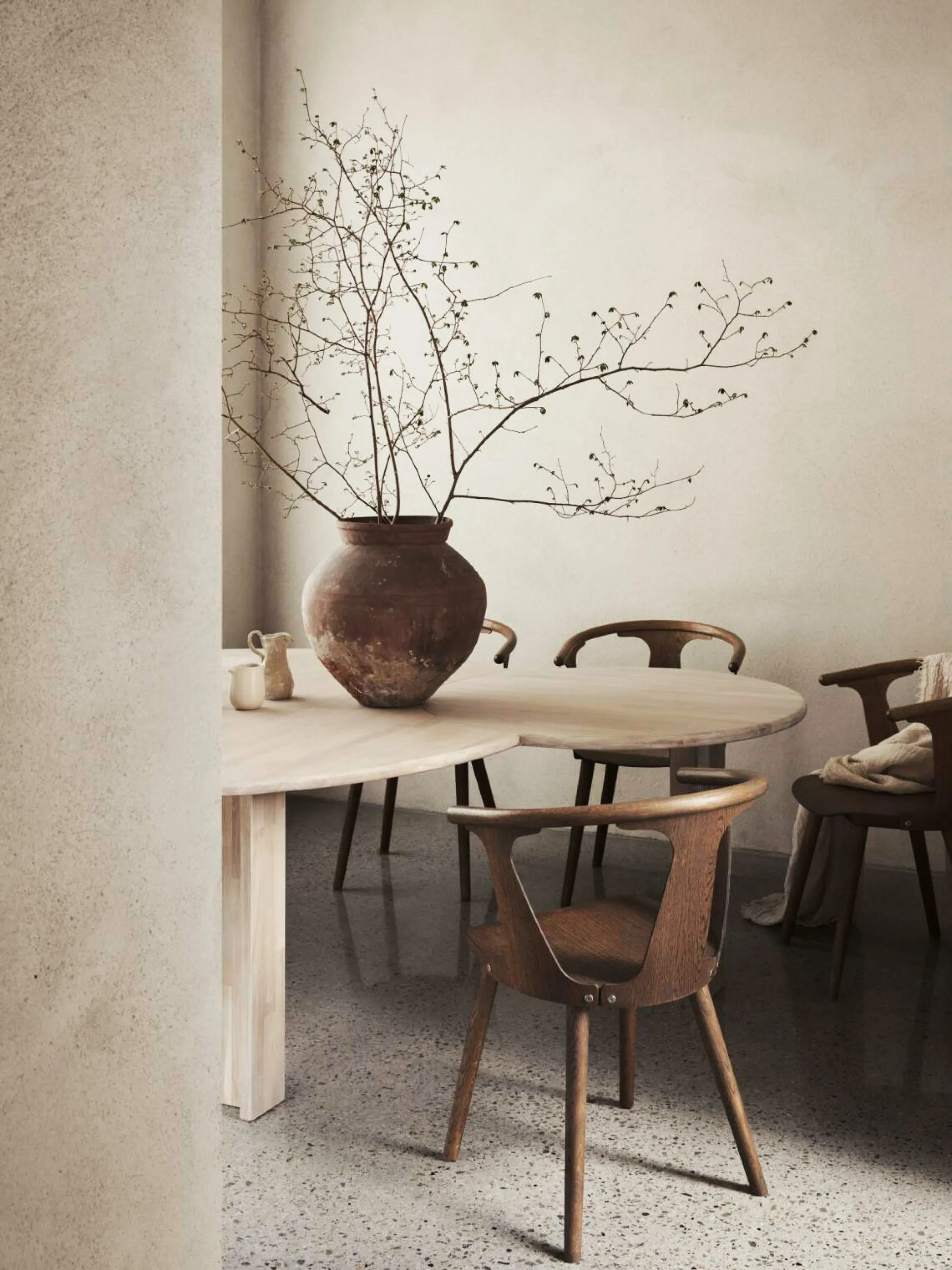Biophilic design room-by-room: the dining area
The dining area is a sociable space in the home, a place to get together and share moments.
This episode of Biophilic Room-by-Room looks into the essence and the design of dining areas from a biophilic perspective…
A convivial and flexible space
Sharing a meal is an activity that inherently connects to the idea of gathering. From a design perspective, this translates into a welcoming atmosphere and an inviting space.
Despite its very specific name, the dining area is often a multi-functional space in the home. Work, crafts, and homework often take place at the dining table, calling for a flexible space that’s able to adapt.

Designing a biophilic dining area
Similar to kitchens, dining areas are occasions to engage the senses through the experience of food. Rich natural materials continue the sensory experience in the space, as much as scents, sounds, and flavours.
Round tables and curved elements communicate a welcoming feel through shape. Light – or the absence of it – adjusts the atmosphere to the circumstance: brighter for sociable gatherings, dimmed for intimate occasions.



Dining areas are spaces where people get together. Through design, the same feeling of connection can extend to food, and to the natural world as whole.
Further resources:
Available in the shop, anooi’s publications explore the nuances of a biophilic ethos, highlight anooi’s perspective on the topic, and cover the studio’s ongoing research in biophilic thinking and design.